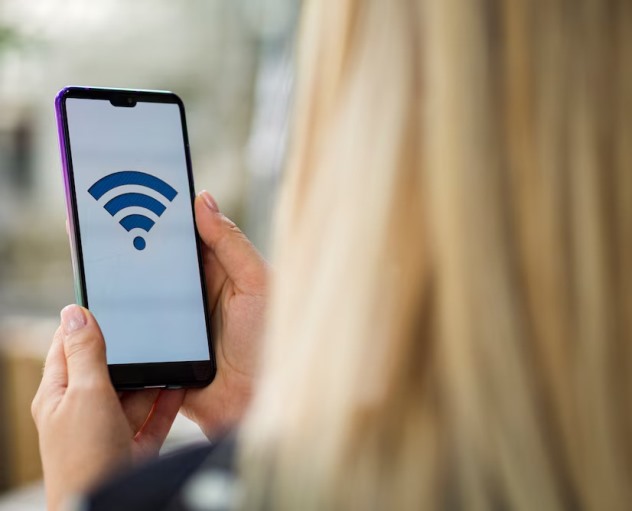Unleashing the Waves: A Comprehensive Guide on How to Get Wi-Fi Without an Ethernet Cable

Introduction
In the ever-evolving landscape of technology, wireless connectivity has become a cornerstone of modern living. While Ethernet cables have traditionally been the go-to for establishing a stable internet connection, the demand for Wi-Fi without the constraints of physical cables has surged. This comprehensive guide aims to unravel the mysteries of obtaining Wi-Fi without an Ethernet cable, exploring various methods, technologies, and practical steps to achieve seamless wireless connectivity.
Understanding the Basics
To embark on our journey toward wireless connectivity, it’s crucial to comprehend the fundamental principles that underpin Wi-Fi technology. Wi-Fi, or Wireless Fidelity, utilizes radio waves to transmit data between a router and connected devices. Unlike Ethernet cables, which physically link devices to a network, Wi-Fi liberates users from the constraints of cords, providing freedom and flexibility in connectivity.
- Wi-Fi Routers and Access Points: The central hub of any wireless network is the Wi-Fi router. Routers act as a gateway, facilitating communication between devices and the internet. Access points, on the other hand, extend the reach of a Wi-Fi network, enabling devices to connect from greater distances.
Methods to Get Wi-Fi Without an Ethernet Cable
Now, let’s explore various methods to achieve Wi-Fi connectivity without relying on traditional Ethernet cables:
- Built-in Wi-Fi: Most modern devices, including laptops, smartphones, and tablets, come equipped with built-in Wi-Fi capabilities. Simply navigate to your device’s settings, locate the Wi-Fi menu, and select an available network to connect.
- USB Wi-Fi Adapters: For devices without built-in Wi-Fi capabilities, USB Wi-Fi adapters provide a convenient solution. These small devices plug into a USB port and enable wireless connectivity, expanding the range of compatible devices.
- Wi-Fi Extenders and Repeaters: To amplify and extend the range of an existing Wi-Fi network, consider using Wi-Fi extenders or repeaters. These devices pick up the signal from your router and rebroadcast it, effectively increasing coverage in areas with weak or no signal.
- Mobile Hotspots: Mobile hotspots, often offered by cellular providers, allow users to create a Wi-Fi network using cellular data. These portable devices are particularly useful in situations where traditional Wi-Fi networks are unavailable.
- Mesh Wi-Fi Systems: Mesh Wi-Fi systems consist of multiple interconnected devices, including a primary router and satellite nodes. This setup creates a mesh network that blankets your home with a strong, consistent Wi-Fi signal, eliminating dead zones.
- Bluetooth Tethering: Some smartphones offer the option to tether via Bluetooth, allowing them to act as a bridge for other devices to access the internet. While not as fast as Wi-Fi, Bluetooth tethering is a viable option for limited connectivity needs.
Practical Steps and Troubleshooting
As you embark on your wireless journey, consider these practical steps to ensure a smooth transition to Wi-Fi without Ethernet cables:
- Secure Your Wi-Fi Network: Protect your Wi-Fi network with a strong password to prevent unauthorized access. Encryption protocols like WPA3 enhance security and safeguard your data.
- Update Firmware and Drivers: Regularly update the firmware of your Wi-Fi router and the drivers of connected devices. Manufacturers release updates to address bugs, enhance performance, and improve security.
- Optimize Router Placement: Position your router strategically to maximize coverage. Avoid obstacles and interference from other electronic devices to ensure optimal signal strength.
- Network Configuration: Access your router’s settings to configure network parameters. Adjusting channels, enabling Quality of Service (QoS), and setting up a guest network are essential steps for a personalized and secure Wi-Fi experience.
- Check for Interference: Identify potential sources of interference, such as other Wi-Fi networks, electronic devices, or physical obstructions. Adjust your router’s settings accordingly to minimize interference.
Conclusion
In the dynamic landscape of wireless connectivity, the quest for Wi-Fi without Ethernet cables has become an essential endeavor. From built-in Wi-Fi capabilities and USB adapters to advanced mesh systems and mobile hotspots, the options are diverse and cater to a wide range of user needs. Armed with the knowledge of these methods and practical steps, users can liberate themselves from the constraints of physical cables, embracing the freedom and flexibility that wireless connectivity brings to the modern world.




